This is my mother-in-law’s famous Pavlova recipe she’s been making for over 30 years. Today, I’m sharing all her tips for how to make a tall meringue with minimal cracks, that boasts a crispy crust and a marshmallow-y centre. Topped with whipped cream and berries, it’s one of the most decadent desserts going around.
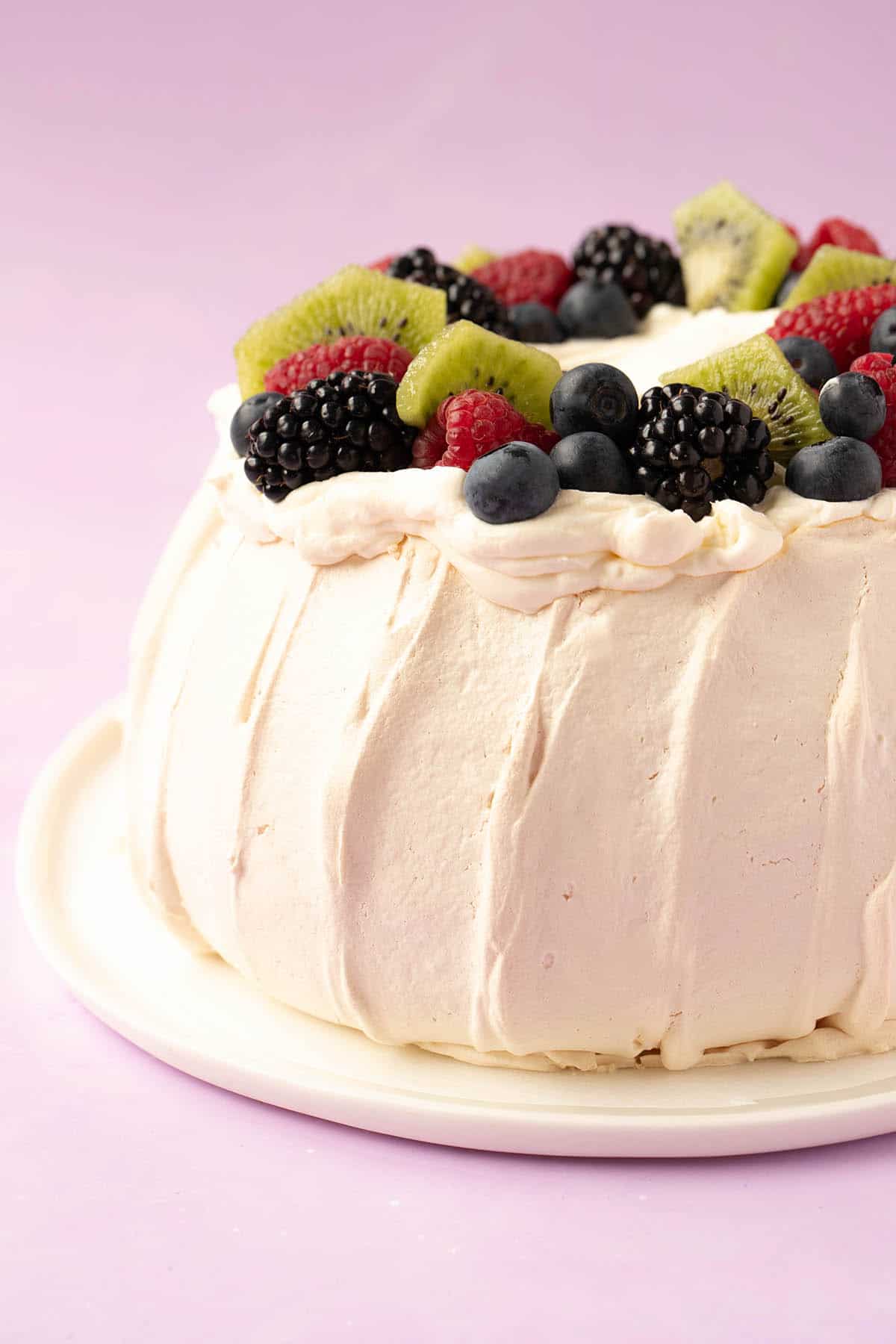
I love Pavlova.
Crispy yet chewy, marshmallow meringue, topped with whipped cream and fresh berries. I think it’s one of the most delicious and impressive homemade desserts.
And my mother-in-law makes the best pavlova I’ve ever had.
Last year when I shared a video on Instagram of her making her annual Christmas Pavlova, I had so many requests for the full recipe. So she’s kindly agreed to share the recipe with us, along with all her tips, since she’s been making Pavlovas from scratch for over 30 years.
why you will love this recipe
- You only need four ingredients for the meringue
- It results in a crisp crust and light, marshmallow-y centre
- It’s gluten free
- You can decorate it with any fresh fruits or berries you like
- You can make this Pavlova the night before serving
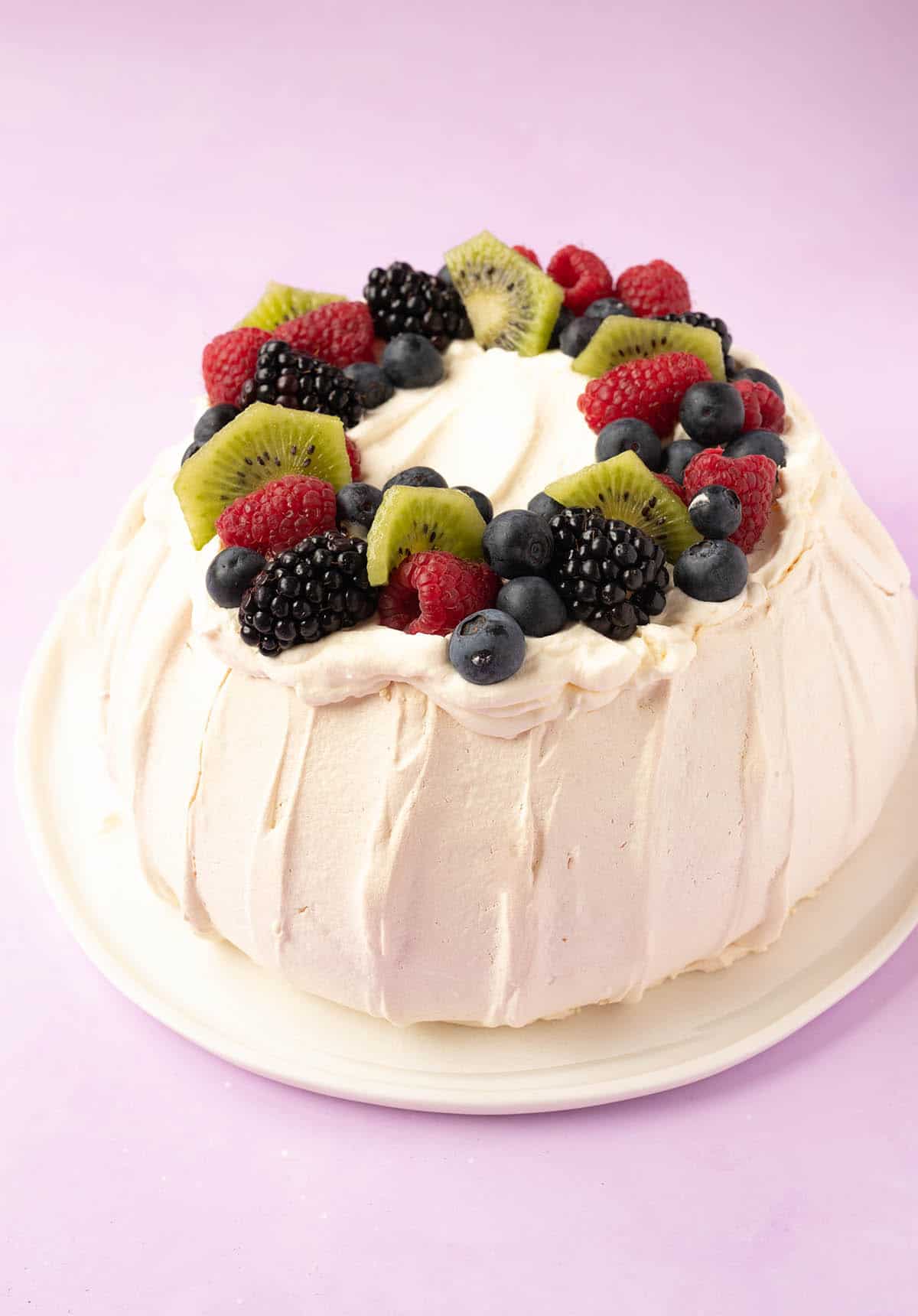
what is pavlova?
Pavlova is a meringue-based dessert that is very popular in Australia, particularly at Christmas time. It consists of egg whites and sugar, which are whipped to stiff peaks and then baked to create a delicate meringue shell, with a marshmallow-like centre.
It is usually topped with whipped cream and fresh fruits and berries. While the ingredients are few, it is notorious for being tricky to make. The meringue itself is extremely fragile and prone to cracking. But I’m here to give you all the tips you need to ensure your next Pavlova is a success.
Ingredients
The ingredients you need for Pavlova are few. It is decorated with whipped cream and fresh fruits, but you only need four ingredients for the meringue itself. Here’s what you will need:
- Egg whites
- Caster sugar: Or very fine sugar.
- Vanilla extract
- White vinegar
- Whipped cream and fresh fruits for serving.
how to make it
It’s important to take your time and read each step for making Pavlova very carefully. You need to ensure your sugar is completely dissolved before baking to ensure your Pavlova doesn’t weep or collapse. Here’s a quick guide on how to make it, but the full detailed instructions are included in the recipe card below.
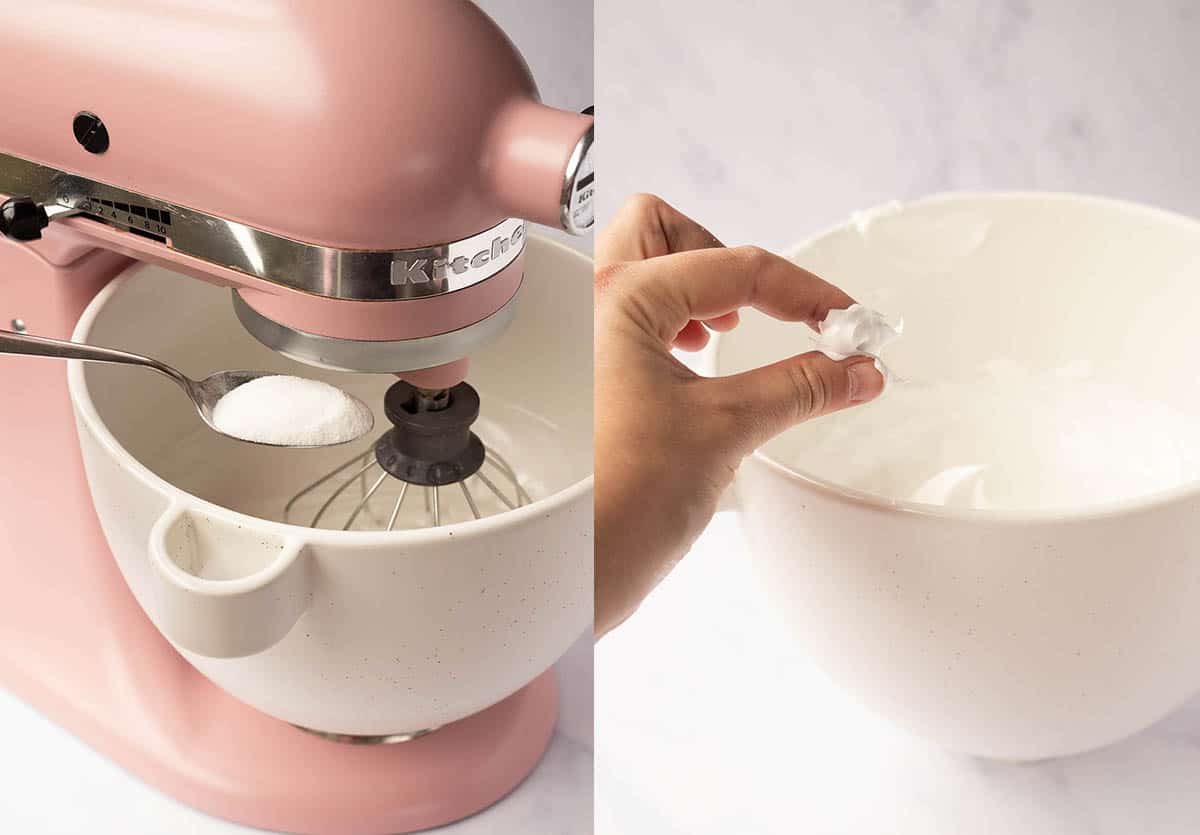
- Separate your eggs very carefully, ensuring there are NO egg yolks in your egg whites. You don’t need the egg yolks for this recipe.
- Use a stand mixer fitted with a whisk attachment to start beating the egg whites on medium speed until they reach soft peaks – approximately 1-2 minutes.
- Turn the mixer up to medium-high speed. Start to gradually add the sugar, 1 tablespoon at a time, while continuing to beat the egg whites.
- Continue until you have added all the sugar. Keep mixing until all the sugar has dissolved and the meringue is thick, white and glossy.
- The easiest way to tell if your meringue is ready is by rubbing a small bit of meringue between your finger and thumb and seeing if you can feel any sugar granules. If you can, keep mixing. As soon as it’s completely smooth and you cannot feel any sugar, stop mixing.
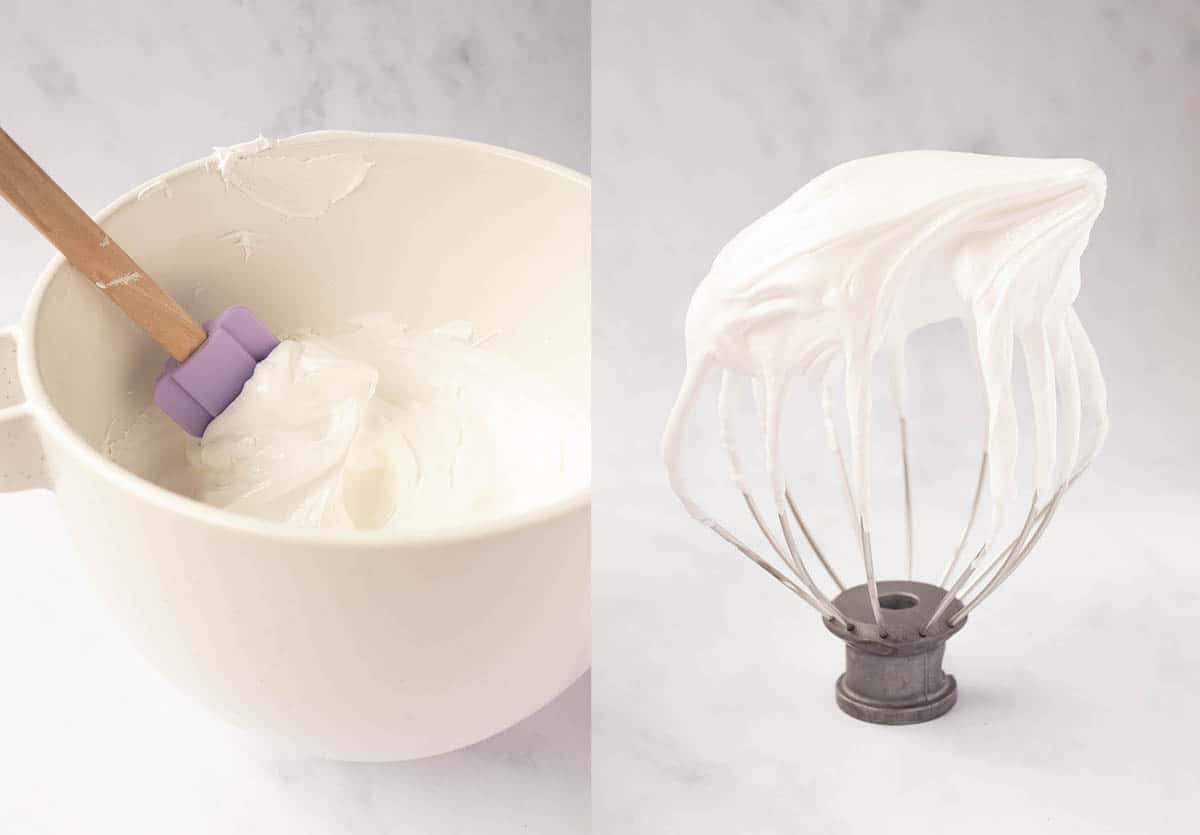
shaping pavlova
You can really bake Pavlova in any shape and size you like, but my mother-in-law’s famous Pavlova is purposely tall and striking. To create this shape, use a small spatula or palette knife to carefully manoeuvre the meringue to form a 6-inch circle, keeping it as tall as possible.
For stability, use a palette knife to craft tall strokes around the edge of the Pavlova, going from the bottom to the top. Then, gently smooth the top. This high-sided shape will boast a very chewy, marshmallow-like middle, while still leaving plenty of room for cream and fruit on top.
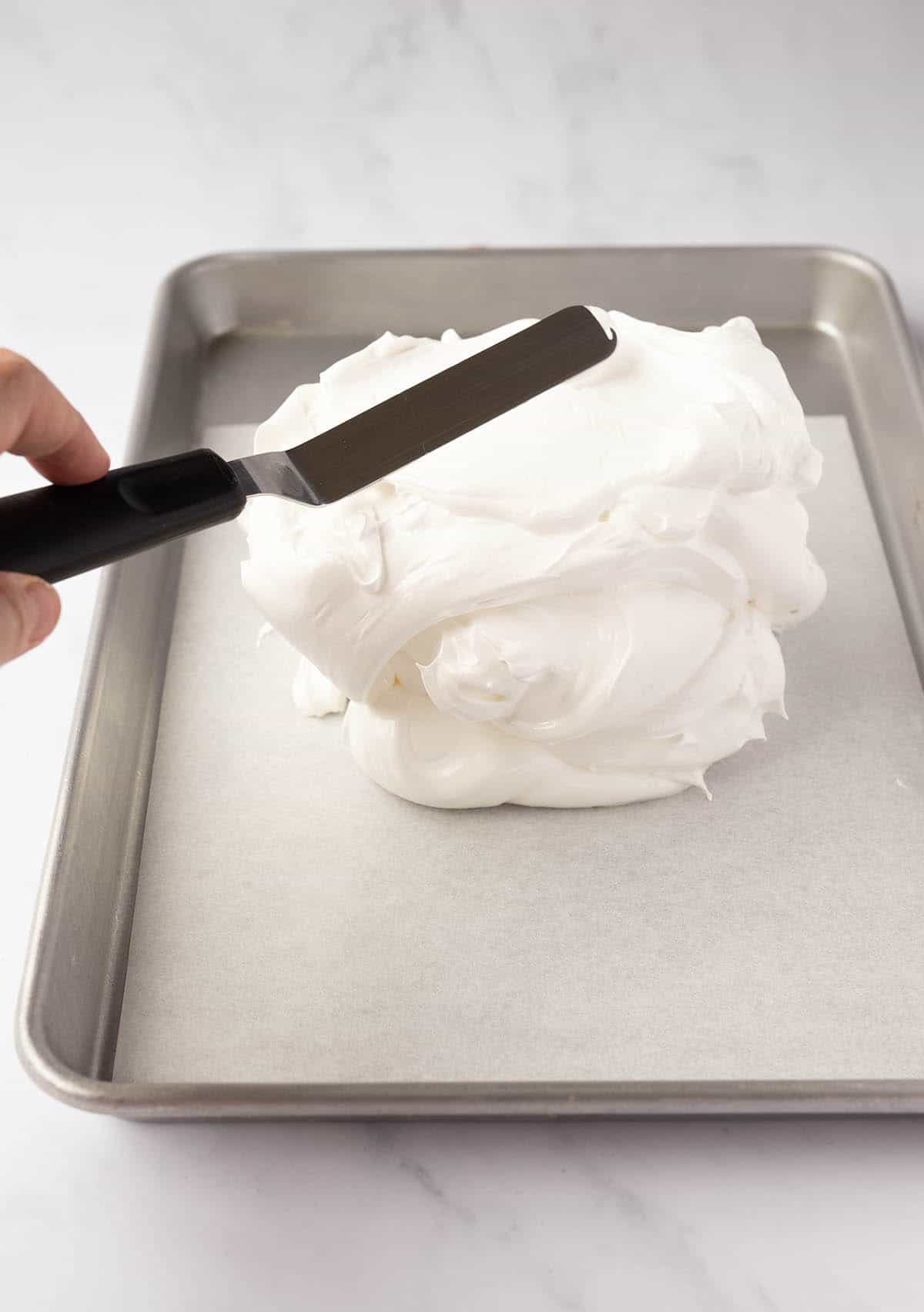
baking pavlova
Pavlova requires a very delicate bake on a low oven temperature. You are essentially drying out the meringue rather than cooking it through. If your oven is too hot, your meringue will over-brown on the outside and be wet and under-baked in the middle.
How do I know when it’s ready?
Every oven is different so I suggest using the cook times as a guide only. You’ll know your Pavlova is cooked when it turns a very light golden brown and is dry and crisp. It should sound hollow when lightly tapped – careful though, even a light tap can poke a hole in your meringue.
Perhaps the most important part of baking a Pavlova is the cooling process. It’s important to let Pavlova cool very slowly, so leave it in the oven (turned off) with the door slightly ajar for hours until it is completely cooled.
If you are making it the day before serving, you can even shut the oven door (once it’s completely cooled) and leave the Pavlova in there overnight.
Remember, moisture is the enemy of meringue so don’t place it in the fridge or anywhere humid, wet or steamy, as it’s likely your baked meringue will soften, crack or weep.
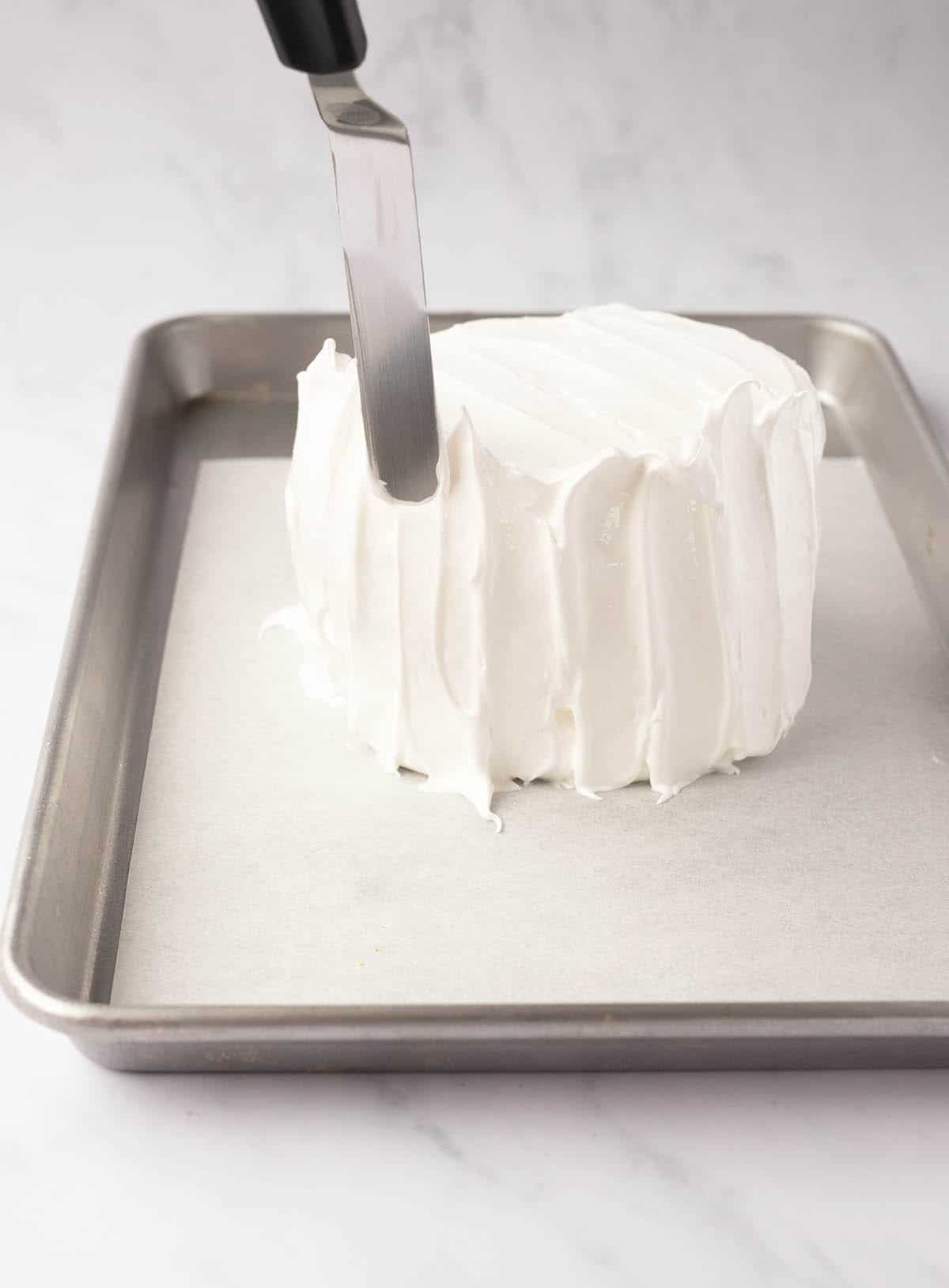
how to decorate pavlova
You only want to decorate your Pavlova when you are ready to serve it – the less time it has to spend in the fridge the better.
My mother-in-law has a clever tip for decorating Pavlova with oodles of cream and fruit. Since Pavlova’s typically have a slightly domed top, it can be hard to pile on plenty of cream and fruit without it all falling over the sides.
So once your Pavlova is completely cooled, carefully use a small sharp knife to cut a circle out of the top of the Pavlova. The crust on top will crumble into pieces revealing the marshmallow middle underneath. Carefully lay the crust back on top of the marshmallow meringue.
This technique gives you the perfect crater to then carefully fill with fresh cream and berries.
- Use a sharp knife to carefully cut out around the top of the meringue.
- Carefully layer the crust pieces back on top of the marshmallow centre.
- Add spoonfuls of freshly whipped cream on top.
- Decorate with your favourite fresh fruits and berries.
Helen’s favourite toppings for Pavlova include freshly whipped cream, raspberries, blueberries, blackberries, strawberries and sliced kiwi fruit.
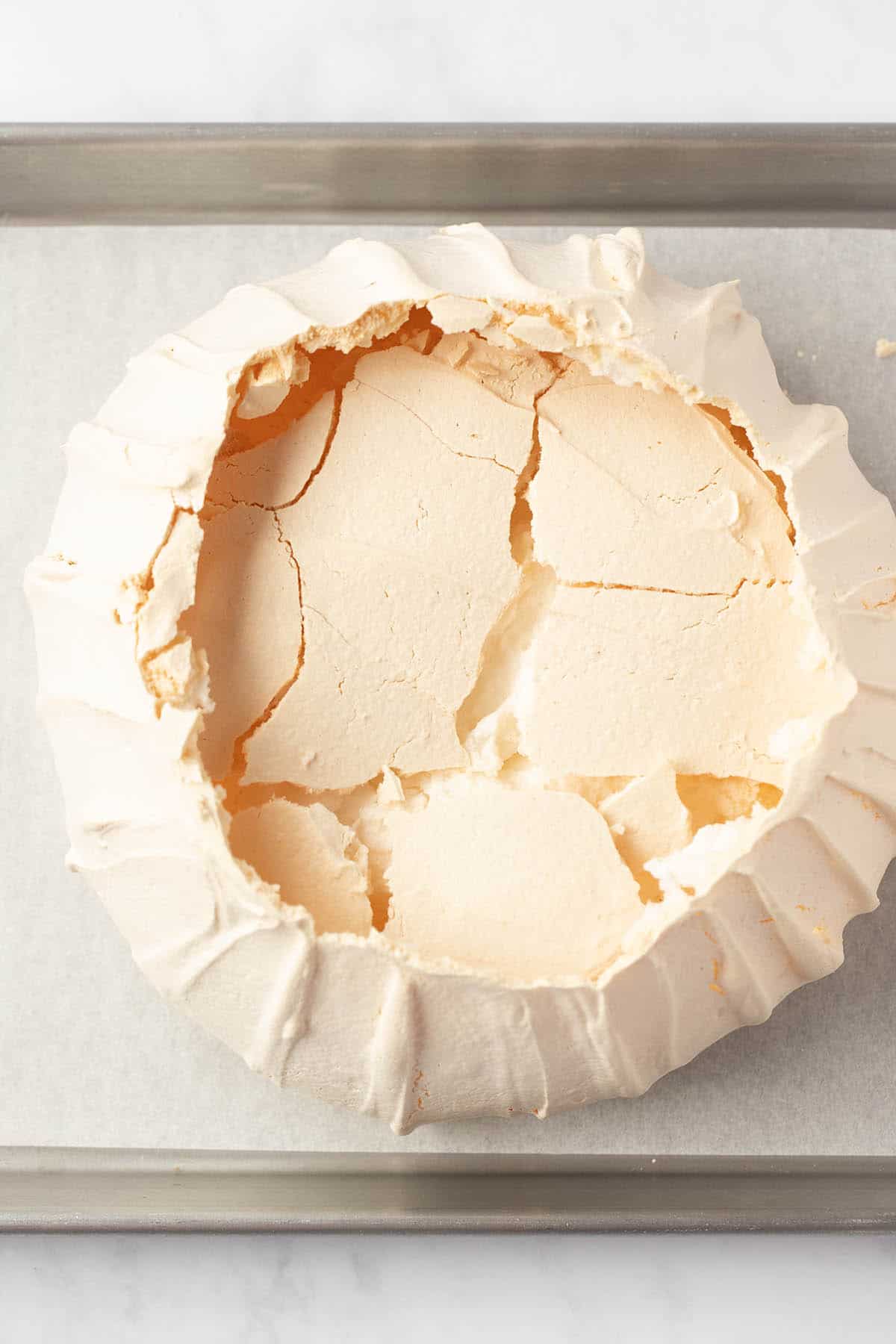
helen’s tips for perfect pavlova
- Avoid a humid environment: Try attempting to make your Pavlova on a cool, low-humidity day if possible. Steam or heat will prevent your meringue from whipping, so make sure you don’t have a kettle boiling near-by, or a hot oven cooking dinner, for example. Ensure your kitchen is as cool as possible.
- Begin with clean, dry equipment: Start by wiping out your mixing bowl and all your utensils with a little vinegar on a paper towel to ensure they are completely clean and completely dry.
- Ensure there are NO egg yolks in your egg whites: It is easier to separate egg whites and egg yolks when using room temperature eggs. Do this carefully, one at a time. If even a spot of egg yolk lands in your egg whites, your eggs won’t whip up properly. And the only way to fix it is to start again.
- Keep whipping until all the sugar is dissolved: Beating together your egg whites and sugar will take time. But you’ll know your meringue is ready when you can rub a small amount of meringue between your forefinger and thumb and you cannot feel any granules of sugar.
- Watch closely for losing volume: While it takes time to get your meringue mixture to reach stiff peaks, you can over-beat meringue. Keep a close watch and you’ll know if you are over-beating your meringue if you start to lose volume.
- Bake meringue on a low heat: Pavlova requires a very delicate bake on a low oven temperature. If your oven is too hot, your meringue will over-brown and the middle will be wet and under-baked.
- Leave meringue to cool in oven: Once your meringue is baked, turn oven off and leave the meringue in the oven with the door ajar. Leave it in there for at least 2-3 hours to completely cool.
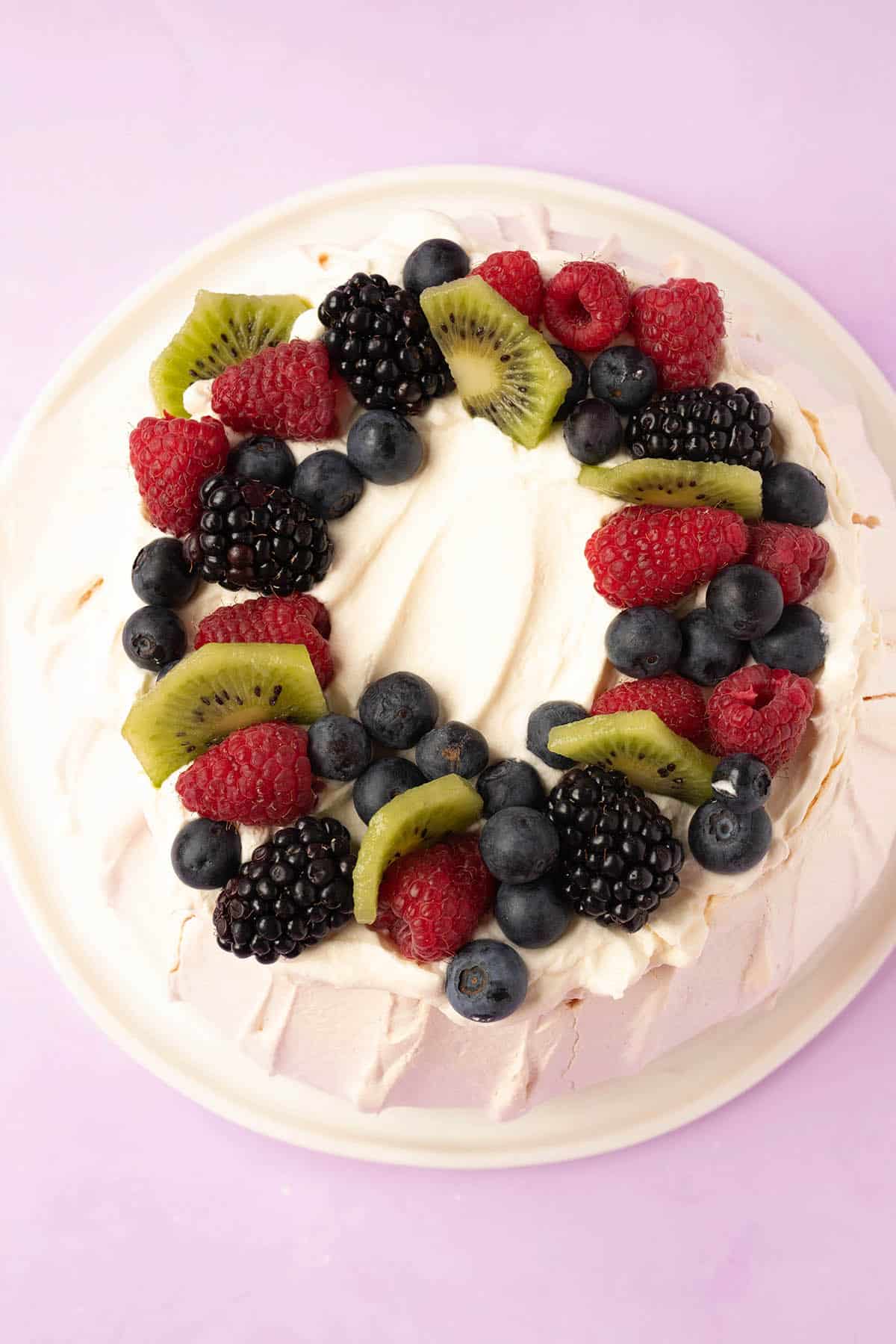
troubleshooting pavlova
Any grease or moisture in your bowl or on your utensils will prevent your eggs from whipping up to stiff peaks. Make sure everything is clean and fully dry before starting. If there is even a speck of egg yolk in your egg whites, you’ll also have trouble getting volume out of your egg whites.
There are a few common reasons why Pavlovas can weep once cooled. It could be a sign your sugar was not completely dissolved before baking and/or a result of under-baking your meringue. It could also mean your Pavlova has been affected by the weather and the humidity.
Pavlovas are prone to cracking, so rest assured this is very normal. Even a perfect Pavlova will have a few minor cracks here and there. However, if your meringue cracks to the point of collapsing, it might be a sign that your oven temperature was too high and/or your egg whites were whipped too quickly – try lowering the speed of your mixer next time. If your meringue was under-baked, it could also mean it’s extra fragile.
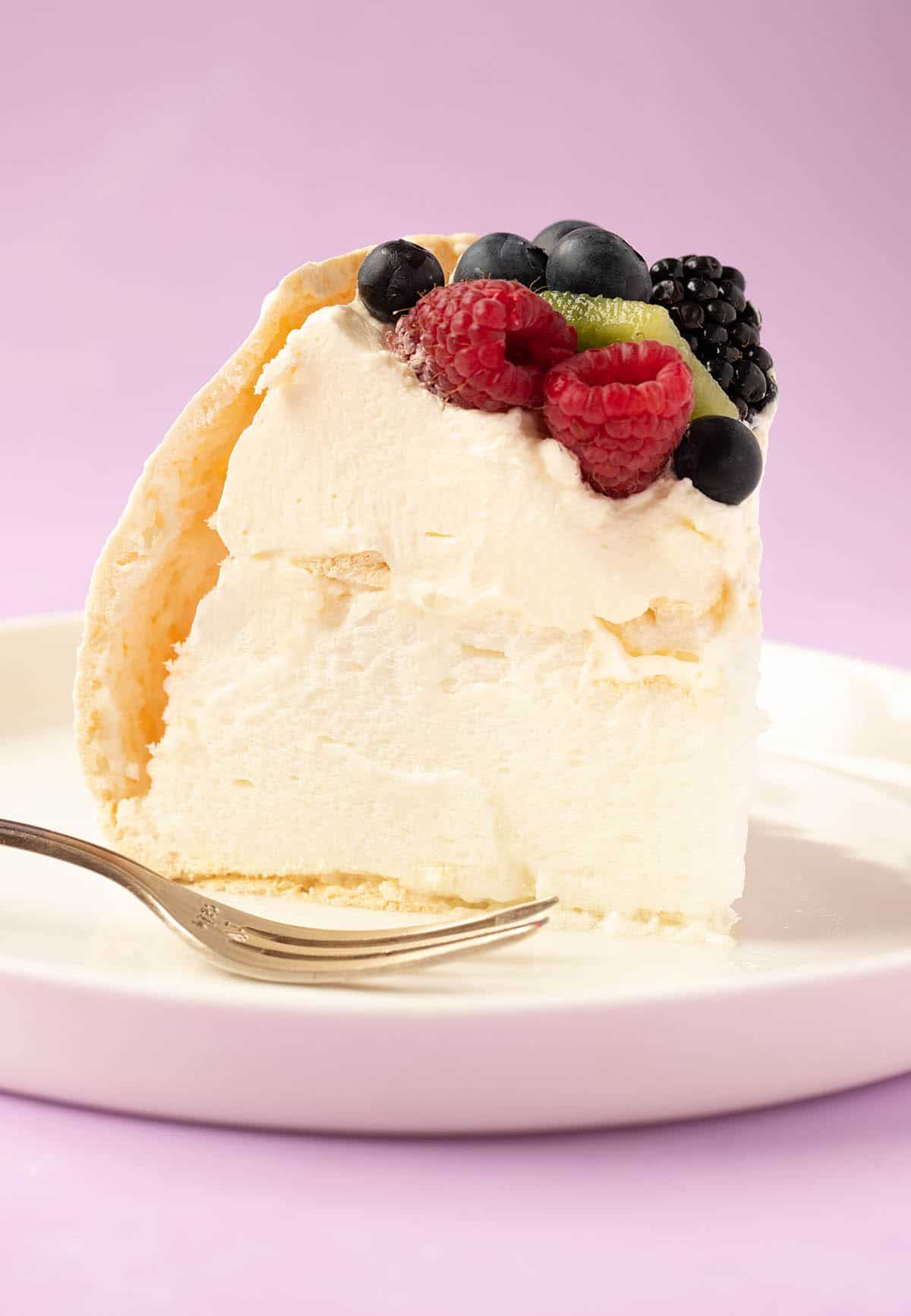
more summer desserts we love
Did you make this recipe? Don’t forget to rate the recipe and leave a comment below. Hungry for more? Join me on Instagram, Facebook, Pinterest and Twitter for more amazing recipe ideas.
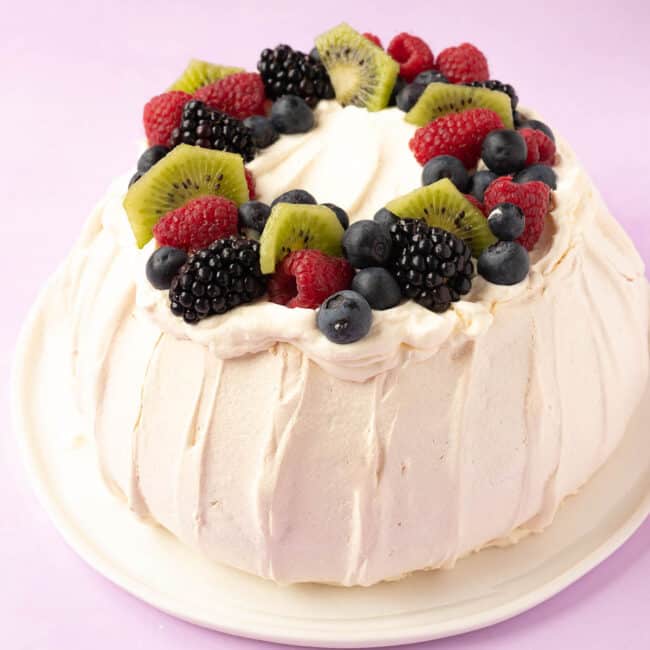
Let’s Bake
Mother-in-law’s Pavlova recipe
A tall Pavlova decorated with whipped cream and fresh fruits.
Ingredients
- 6 large eggs, room temperature
- 300 grams (1 and 1/2 cups) caster sugar or very fine sugar
- 1 and 1/2 teaspoons white vinegar
- 1 teaspoon vanilla extract
- 500 ml (2 cups) thickened or heavy cream, to decorate
- Fresh fruits or berries, to decorate
Instructions
- Preheat oven to 120 C (250 F) standard / 110 C (230 F) fan-forced. Line a large aluminum baking tray with non-stick baking or parchment paper. Ensure your mixing bowl and utensils are clean and completely dry.
- Separate your eggs very carefully, ensuring there are NO egg yolks in your egg whites.You won’t need the egg yolks for this recipe.
- Use a stand mixer fitted with a whisk attachment to start beating the egg whites on medium speed until they reach soft peaks – approximately 1-2 minutes.
- Turn the mixer up to medium-high speed. Gradually add sugar, 1 tablespoon at a time, while continuing to beat the egg whites.
- Continue until you have added all the sugar. Keep mixing until all the sugar has dissolved and the meringue reaches stiff peaks. It should be thick, white and glossy. The easiest way to tell if your meringue is ready is by rubbing a small bit of meringue between your finger and thumb and seeing if you can still feel any sugar granules. If you can, keep mixing. As soon as it’s smooth and you cannot feel any sugar, stop mixing.
- Finally, add vinegar and vanilla to meringue mixture and beat on medium-high for 1 minute.
- Transfer meringue to prepared tray and use a small spatula or palette knife to shape the meringue into a 6-inch circle, keeping it as tall as possible.
- Then, use the knife to pull upwards to make long strokes all the way around the edges. This will help provide the meringue with more stability.
- Bake meringue for approximately 1 and 1/2 hours or until it is lightly golden, crisp, and hollow sounding when lightly tapped. Turn the oven off and leave the Pavlova in the oven to cool completely, with the door ajar.
- To decorate, carefully use a small sharp knife to cut a circle out of the top of the Pavlova. The crust on top will crumble into pieces revealing the marshmallow middle underneath. Carefully lay the crust back on top of the marshmallow meringue. See photo below for guidance.
- Place cream in a large mixing bowl. Use an electric mixer fitted with a whisk attachment and start beating on a medium speed.
- Continue to mix and watch closely as the cream changes texture. Instead of going by time, look for visual clues. Your cream will slowly thicken and become smooth, creamy, and cloud-like.
- Dollop cream all over the top of the meringue. Carefully arrange fresh fruits and berries on top of the cream. Serve immediately.
Notes
Egg whites: Be very careful when separating your eggs. Even if a speck of egg yolk lands in your egg whites, your meringue won’t whip up correctly and you’ll need to start again.
Caster sugar: You need to ensure your sugar is completely dissolved before baking your meringue. The easiest way to test this is by rubbing a small amount of meringue between your forefinger and thumb and seeing if you can feel any granules of sugar. If you can, keep mixing. As soon as you can’t, stop mixing. My Mother-in-law even checks the meringue after each spoonful of sugar is added, to ensure the sugar is dissolved before adding the next.
Fruits and berries: You can really use any fresh fruit or berries you like to decorate your Palova. Helen’s favourite toppings include raspberries, blueberries, blackberries, strawberries and sliced kiwi fruit.
Baking and cooling: It’s very important to let Pavlova slowly, so leave it in the oven (turned off) with the door slightly ajar for hours until it is completely cooled.
Making ahead: If you are making it the day before serving, you can even shut the oven door (once it’s completely cooled) and leave the Pavlova in there overnight. Alternatively, loosely cover with baking paper and leave it at room temperature. Do not put it in the fridge.
Cracking: Pavlovas are prone to cracking, so rest assured this is very normal. Even a perfect Pavlova will have a few minor cracks here and there. However, if your meringue cracks so much it’s at the point of collapsing, it might be a sign that your oven temperature was too high and/or your egg whites were whipped too quickly – try lowering the speed of your mixer next time. If your meringue was under-baked, it could also mean it’s extra fragile.
Weeping: There are a few common reasons why Pavlovas can weep once cooled. It could be a sign your sugar was not completely dissolved before baking and/or a result of under-baking your meringue. It could also mean your Pavlova has been affected by the weather and the humidity.
Nutrition Information
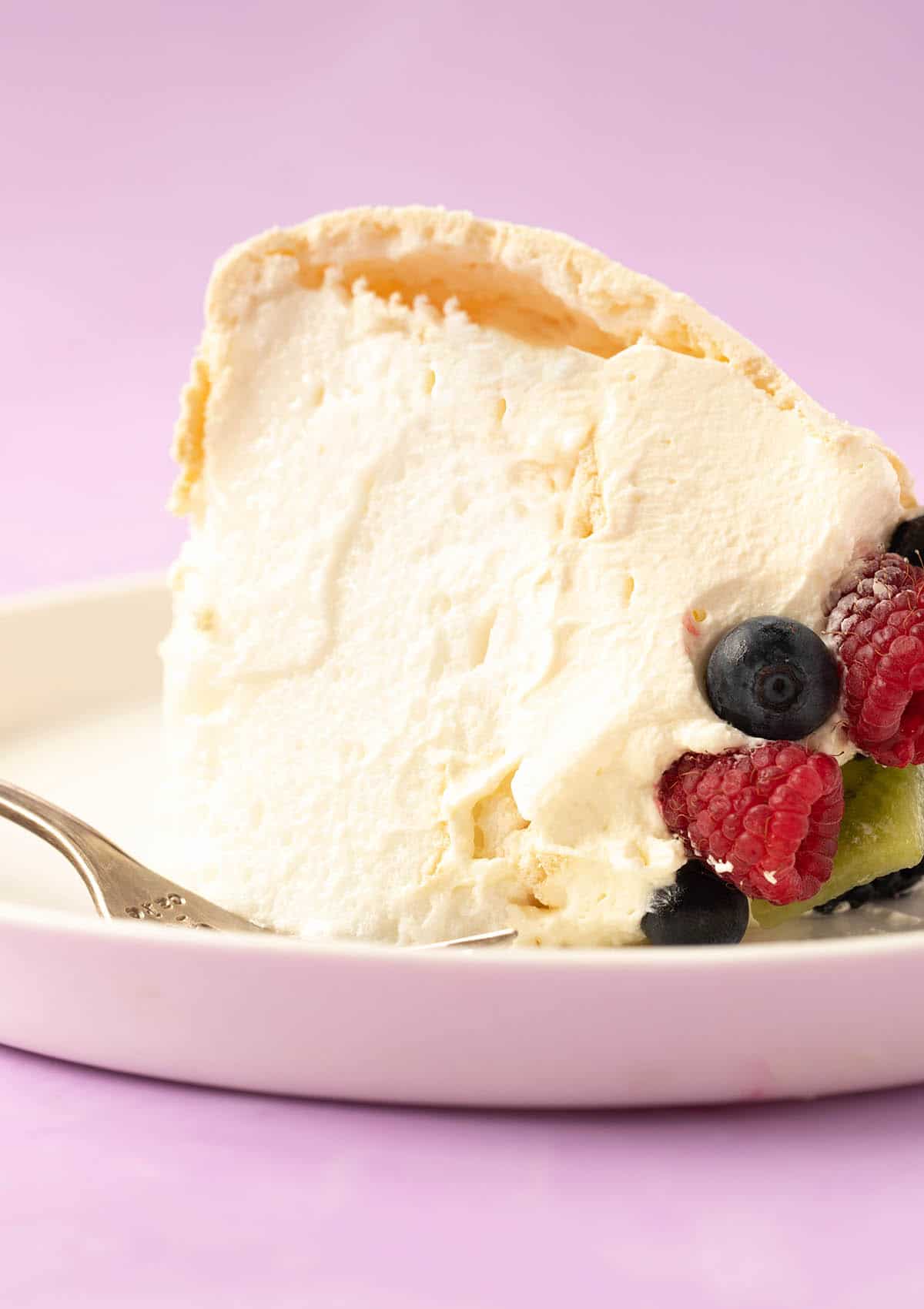

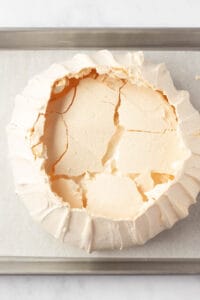

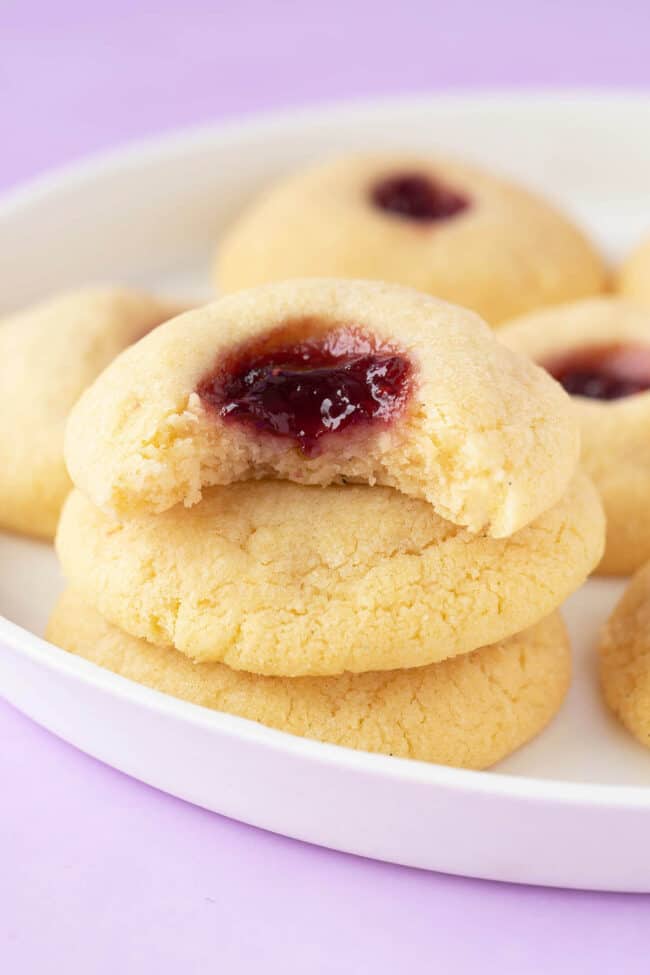
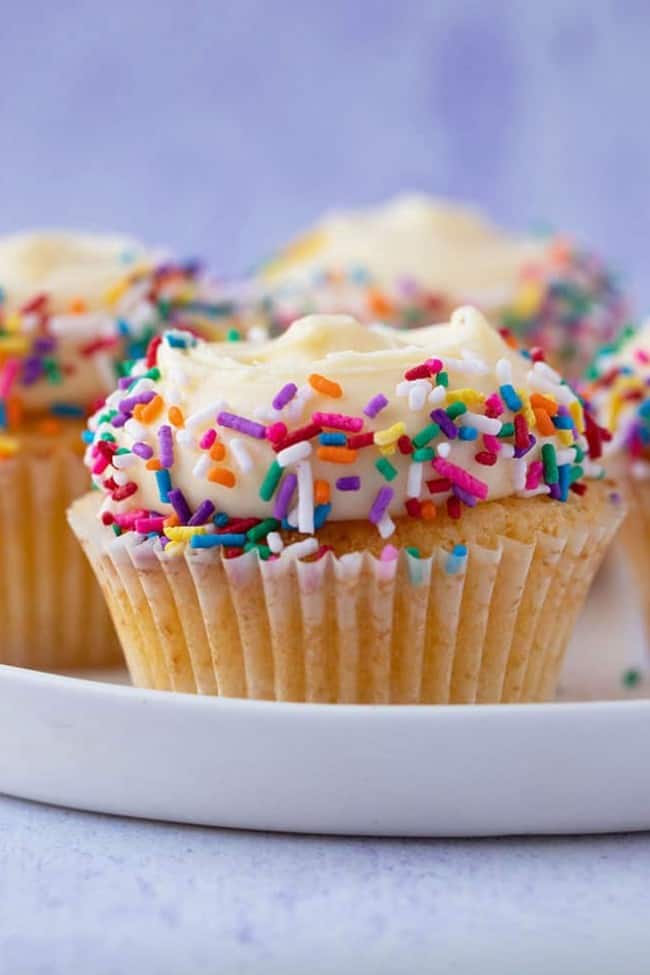
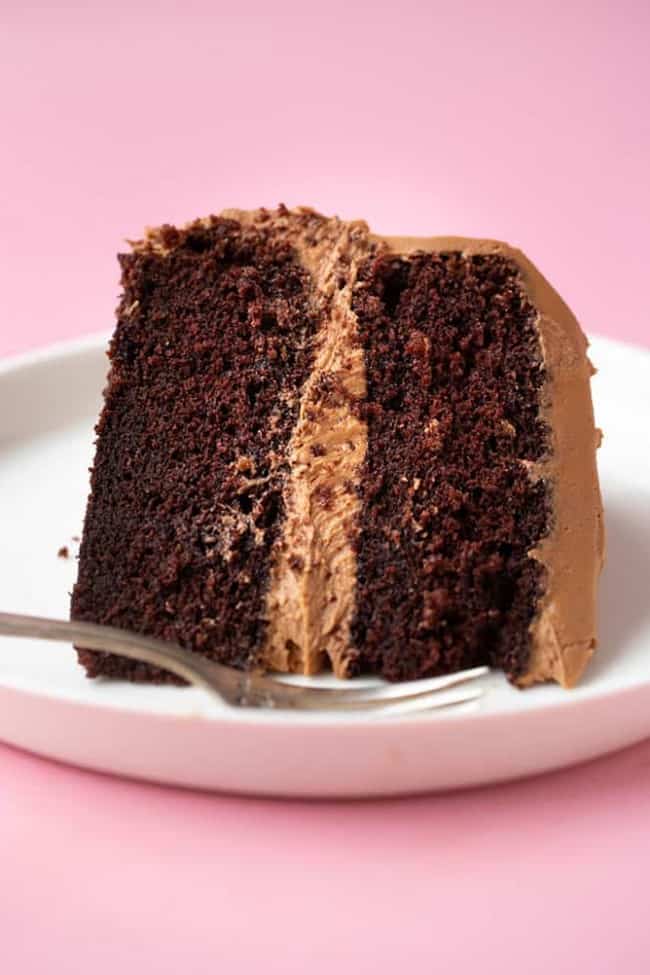
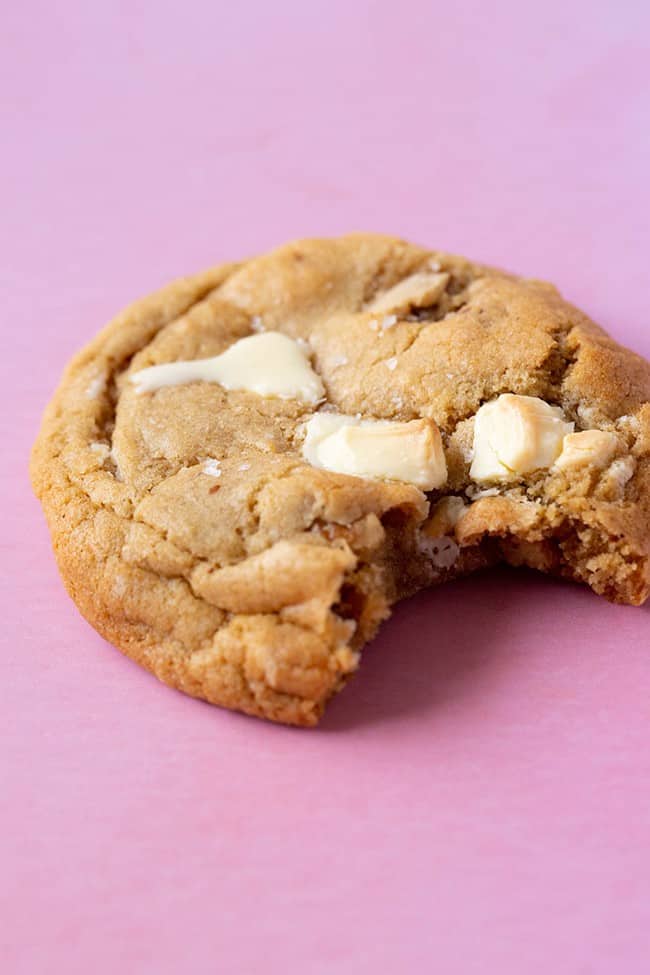
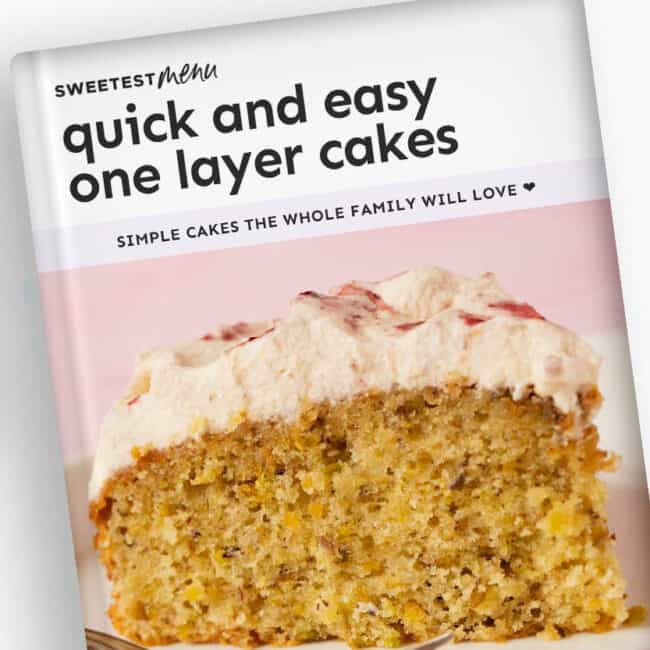
Shirley says
Hi! Looking forward to making this pavolva! I would like to add a lemon curd you think that would be ok in this recipe? If so do i add it on top of whip creamed or under it thank you!
Jessica Holmes says
Hi Shirley! That sounds lovely. I think on top of the cream would be the way to go! Let me know how it goes 🙂
Tess says
In the oven for NYE .. and she’s looking tall and gorgeous! Can’t wait to enjoy this special pav as my last dessert of the year. And I already know it’s going to be amazing
Jessica Holmes says
How wonderful! Happy new year Tess!
Josh says
Loved it!
Sandra says
Pavlovas are also very popular in Croatia where I come from! Thank you for this, can’t wait to try and impress my friends and family who know I’m the least domesticated person they know.
Jessica Holmes says
Yay! I hope you love it Sandra! I also love hearing that Pavlova is a loved dessert even on the other side of the world.